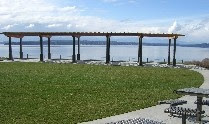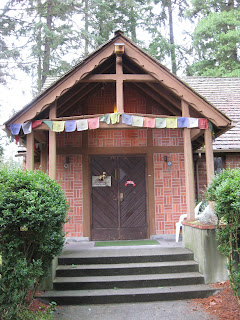| A Centennial Walk to Commemorate 100 Years of the Red Brick Road  |
| Shoreline's historic "Red Brick Road" (aka North Trunk Road) to be a key feature of the Town Center Park. |
Why not an "Architectural Arcade" or Pergola somewhere on the Town Center Park?
 |
| Headhouse Square Arcade in Philadelphia is now the home of a popular Farmers Market. It is modeled after a market there from the Colonial era. |
It could be very simple or more elaborate. It could be open on top or closed as a shelter (above). Either way it would be a very attractive feature of the Town Center. Shoreline already has a similar structure at Richmond Beach Saltwater Park, which is a big attraction to visitors.
 |
Pergola or Arbor at Richmond Beach Salt Water Park |
An arcade could be designed to resemble a train station to harken back to the Interuban.
Let's be creative with our Town Center Park and carry out the underlying theme of the Red Brick Road throughout the entire Town Center to really bring life and meaning to the center of our city.




































